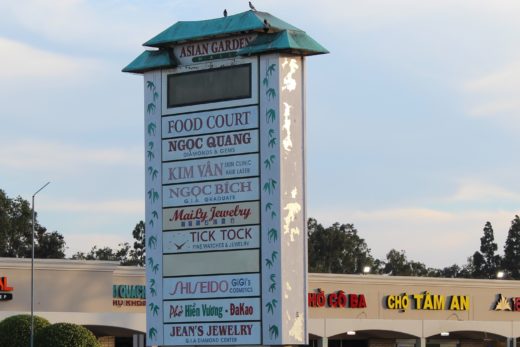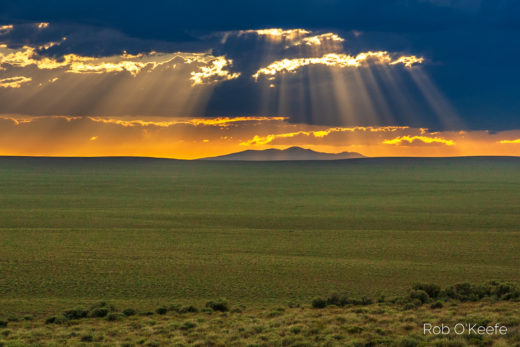End of Summer, 2021 Update
In late July, 2021, just more than a month after we posted this “last” COVID-19 story, we were required to add an unfortunate update: California (and the nation) was headed in the wrong coronavirus direction again. As you read (below) about the lasting effects of the pandemic, note the positive trends in June that were leading us out of danger and into the light. But, by the end of July, the highly infectious and aggressive Delta variant was responsible for a dramatic new surge in illnesses, mostly among those who were not vaccinated.
As of July 26, the state was reporting more than 7,000 new cases per day, six times higher than a month before, with a 161% increase in just 14 days. The 3,200 patients hospitalized had doubled in just two weeks. What fueled this spike? About 97% of those hospitalized were not vaccinated. Though coronavirus vaccinations have proven exceptionally effective by any measure, about ¼ of all eligible Californians had still chosen not to take the shots. When including those not yet eligible, only 61% had received one dose and only 53% were fully vaccinated, leaving the state vulnerable to this new variant. The results were predictable; COVID illnesses and deaths surged in regions where vaccination rates were lowest.
By mid-September, many Central Valley hospitals (particularly in Fresno County and the San Joaquin Valley) were in crisis, running over 100% standard capacity, forcing COVID patients to wait days for limited ICU surge beds. Overwhelmed hospitals brought in National Guard medical team reinforcements. Human interest stories about the unvaccinated crowding local hospitals and sometimes dying were tragically repeated in local media, such as the 40-year-old San Joaquin County woman who publicly fought against masking and vaccines until she was also infected and then left four children behind.
Meanwhile, as if to accentuate the division between the two Californias, infection rates plummeted in the cities with highest vaccination rates. By September 20, 2021, the CDC reported that California’s 95 COVID cases/100,000 people (seven-day case rate) was the lowest in the country and 66% of the state’s population had received at least one shot. Average statewide rates were more than two times lower than bordering states and more than three times lower than Texas and Florida; still, rates in those few local Golden State hot spots, tragically, resembled the sickest states. Geography (location) had become one of the most important factors determining who might become seriously ill and die.
And so this disease continues to ravage all of us and slow our recovery, but now with avoidable and self-inflicted wounds. As we look back at the positive language in our story below, showing trends from early this summer, we are haunted by the quick recovery that could have been, if only vaccinations were taken more seriously. Instead, by September, consumer confidence was dropping again and hopes for robust economic growth were dampened, especially in the hard-hid services sectors that included leisure and hospitality industries, while total hospitalizations and deaths of the unvaccinated continued to accumulate. Now that we have updated you with this mix of bad and good news about short-term trends, note how the long-term effects remain the focus of our original story.
From mid-June, 2021…
The Golden State, along with the nation, seems to be nearing the end of an historic war. As of the middle of June 2021, the Coronavirus enemy had killed nearly 63,000 Californians and about 600,000 Americans, and it had permanently injured many times more. Nearly 3.8 million California cases and at least 33 million U.S. COVID-19 cases have been confirmed, though there have been many more undiagnosed illnesses. Casualties range far beyond the lives and parts of families that have perished. Thousands of businesses have been destroyed, along with the life savings, investments, and dreams of their owners. Thousands more have been crippled. Millions of households have suffered from lost jobs and incomes and some may never recover. The pandemic crept into every household in different ways and then spread staggering collateral damage to nearly every sector of our economy. We will never be the same.

Indelible Scars
Finally, after 15 months of trying to understand the invisible enemy and debating how to fight it, we have gained the upper hand and are reopening California. We are haunted by our mistakes and informed by our lessons learned as we ask if we won or lost this war. As is often the case with war, the answer depends on who you are and how you were impacted, especially for those who lost loved ones or spent weeks recovering. As with so many other crises, the most vulnerable and low-income residents have been hit the hardest, while those with the resources have largely weathered the storm with less damage, further exacerbating that gap between the wealthy and working classes.

Documenting the War
We have documented many of these battles on this web site with two substantial stories that covered parts of the state from north to south. Our first story asked a lot of questions as we hunkered down in our communities during a bewildering period last spring, just after the attack began. Our second story covered a frustrating period into the summer of 2020, when we knew more about the enemy, but engaged in fierce debates about how to respond to the pandemic. We illustrated the astounding range of reactions and the impacts on our people and landscapes that reflect our diversity; you are encouraged to scan back to these lengthy stories, chronicles that appeared months earlier on our web site.

War with an invisible enemy presents unique challenges and it is unfortunate that some Californians, as with many Americans, spent more time and energy arguing over how to wage the war, rather than joining together to fight it. While some favored draconian restrictions with crippling lockdowns and stringent shelter-in-place, others completely ignored the enemy as if it didn’t exist, allowing the virus to spread, kill, and maim unchecked, prioritizing economic concerns over health consequences. And as with much of the nation, California’s official response was somewhere in between. We all struggled and fought to find the most rational and effective middle ground that could save lives AND the economy.
Our results have also been mixed. But with per capita infection and death rates below the national average, our state is now leading the nation out of the crisis with some of the lowest numbers throughout spring, 2021. As of our reopening on June 15, 2021, California boasts some of the lowest case rates and highest vaccination rates in the nation. Our positivity rates consistently remain below 1% and more than 70% of eligible Californians have received at least one vaccination. (You can see updated data in the links near the end of this story.) Beyond all the suffering and business failures, one of the biggest economic surprises came at the end of the pandemic with an astounding bounty of money in the form of another historic state budget surplus (several tens of billions of dollars), partially thanks to a flood of tax revenue from wealthier and healthier residents. Now, rather than pointing fingers, it is a time to examine what remains and what we learned from this war, for there will certainly be others, and we hope our worst enemies won’t be us.

Here, we celebrate putting COVID-19 in our rearview mirrors as we finally and officially reopen the Golden State. Now that the virus seems to be under control, we offer what we hope will be this last pandemic story from California on our web site. For those of you not from the Golden State, the three stories combined now provide an historic account summarizing how Californians weathered the pandemic, from its start and hopefully, to its finish. This last story examines a few enduring lessons and some imprints the Coronavirus pandemic stamped on our state’s people and landscapes. Since it would be impossible to cover all the remarkable and lasting changes, we will pick out several notables from a geographical perspective. We encourage you to use your experiences and lessons to make your own list, always imagining how we could have worked better together to find the sweet middle ground that would have saved more lives and lessened the personal tragedies and economic suffering in the long run.

A Very Different War in the Two Californias
First, we note that infection and illness rates remain particularly high among those who are not vaccinated and have refused to take precautions. The pandemic lingers on within those groups. In contrast, data show infection rates dropping dramatically in groups with a larger percentage of people who are vaccinated. It is clear that the war is being fought and won by the vaccinated. These trends have become evident on the maps comparing vaccination and infection distributions. And though the state has recently made great strides toward distributing vaccines to the least healthy, low-income communities, these populations remain most resistant with the lowest vaccination rates… and far more vulnerable. Surveys showed the poorest 25% of zip codes with only about 43% of their populations fully vaccinated, while 68% of the people within healthiest and wealthiest zip codes were fully vaccinated going into June, 2021. Put in other words, zip codes where folks already struggle with lower life expectancies and levels of education and less access to reliable housing, transportation, and medical care continue to suffer with lowest vaccination rates and highest number of infections and hospitalizations, in spite of the state’s aggressive attempts to reach out and in to such communities: https://covid19.ca.gov/vaccination-progress-data/
We can see how Californians have reacted to these Coronavirus threats and historic changes to their surrounding environments in a variety of ways that will have lasting impacts on all of us. We’ll start an abbreviated list here, making just a few notable observations, so that you can continue your own list and conversations.

Reconnecting to Science for Survival
We have reconfirmed how viruses spread and how to stop them. Those who applied lessons learned from previous pandemics (such as the 1918 influenza that infected about 1/3 of the world’s population) implemented common sense methods of social distancing and masking in crowded public settings. Their infection, illness, and death rates were dramatically lower, slowing the spread. In contrast, those who ignored these long-established medical precautions, or were forced to work in dangerous environments requiring closer public contact (such as health care workers and service workers), suffered the highest infection rates, illnesses, and deaths. These life and death survival lessons have forced us to become more aware of our relationships to our surrounding environments. The pandemic encouraged us to hone our observation skills and use the scientific method to reassess our lives and our places in this world. We are now using this knowledge to repel the mutating variances that threaten to interrupt our recovery. The science is further confirmed when we recognize how our cautionary pandemic behavior changes also suffocated the annual cold and flu season before it could get started.

Redefining “Attendance”
We have redefined attendance expectations at many work, school, and social events. The good news is that most folks with child care and home health care responsibilities and challenging commute issues have been able to attend work and school on line. Motivated people with the technological skills and resources are finding abundant opportunities and more time to improve and progress. The bad news is that some less skilled, mostly lower-income folks haven’t gained adequate technical support to compete. Additionally, some students and employees who may have required more supervision and encouragement have been abandoned within a culture that was supposed to celebrate inclusion. Now that we have learned how certain tasks can be efficiently accomplished on line and within hybrid formats, we are challenged to bring the forgotten back into our village. Showing up still matters, whether in person or on line, and we now must reach out to this too often hidden, disenfranchised population that may have been left behind in the pandemic dust.

There’s No Place like Home
After the crisis hit, we spent less time and fewer resources commuting. As the pandemic eased, nontraditional and confusing transportation patterns emerged that include people travelling by choice at any time. We also spent less time and resources on clothing, personal hygiene, and the styling required to leave home, as professional and social meetings moved on line. This has also allowed us to spend more quality time tending to important personal and family responsibilities. More folks have discovered that there is no place like home, adding the camaraderie of new pets and the pleasure of domestic activities such as outdoor barbecue events.

Competing to Escape
As we reopen, some of the money saved and accumulated vacation time is now being spent soothing cabin fever. As example, the startling 2021 Memorial Day rush to travel on land and by air sounded a big post-COVID alarm. As domestic travel exploded, many lodging reservations and car rentals doubled in number and costs over the last year at the same time. In some cities, Uber and Lyft rates doubled during peak times, thanks to fewer drivers and the sudden swarm of rider demands.

Help Wanted
Furloughs, lockdowns, and idle factories have interrupted global supply chains. As the pandemic wanes, temporary shortages of goods and services and workers have conspired with sudden increases in demands, resulting in market imbalances, leading to some of the highest inflation rates in more than a decade, as of June, 2021. Some employers are offering return-to-work incentives that include partial school tuition pay and one-time bonuses, necessary business decisions that drive prices even higher.

Exposing New Vulnerabilities
Temporary shortages have become especially evident in meat packing and distribution and other intensive food industries. The global shortage in microchips has stifled production and infected huge segments of the economy, from advanced technologies to car manufacturing industries. The pandemic has revealed our evolving vulnerabilities. A few decades ago, the U.S. controlled 90% of semiconductor manufacturing; it now only accounts for about 10% of global semiconductor production as demands increase. The pandemic-driven shortages exposed how we have fallen behind in our R&D investments into essential manufacturing and technology industries and how California can play a leading role in reestablishing the leadership that is crucial for our economic security.
As an example of the power of ripple effects, these supply chain shortages have also caused dramatic spikes in demand and prices for used products, such as cars. Increasing demands for rental cars have exacerbated the problem as rental companies are less likely to shed their older models into the markets as long as they can command top dollar on rental contracts. No person knows how long these imbalances will last or what changes may become permanent. But, the pandemic highlighted our vulnerabilities and that should encourage us to shore up our supply chains, partly by encouraging more manufacturing and R&D in California for Californians. Just as we have learned lessons about how we might react to the next virus threat to save lives, we have no excuses for ignoring the economic warning signs raised by the pandemic and the inevitable traumatic ripple effects that can follow.

Housing Market Chaos as Example
California’s real estate and rental markets exhibit remarkable examples of enormous pandemic-fueled upheavals that few experts could have predicted. Here is where we can use economic geography to help us understand some of the powerful and recent changes that connect all of us. We started with a pre-pandemic state that was already reeling from skyrocketing real estate prices and rents, particularly in coastal cities. Record low interest rates encouraged more home buying, further escalating record-high prices. Working- and middle-class residents were being priced out of gentrified, unaffordable neighborhoods, such as in those crowded coastal cities. Many fled to rural and inland communities with lower housing costs and rents. Others migrated to more affordable states. For the first time, California’s population stopped growing and even experienced a slight loss as the pandemic hit. As the pandemic grew, many more residents fled the more densely populated urban neighborhoods, escaping to the safety of suburban, rural, and resort open spaces that were also more affordable.

As real estate markets initially paused to adjust, the bottom fell out of urban rental markets. At the height of the pandemic, rents dropped up to 20% within some of the densest urban neighborhoods, such as in San Francisco and Los Angeles. Many high-income cosmopolitans were finding success working and learning on line from more remote locations. Resort towns and rentals quickly filled to capacity with semi-permanent newcomers and the flood of B&B vacationers seeking out safe open spaces. While the pandemic evolved, a series of positive feedback mechanisms created the perfect storm for skyrocketing real estate prices.
Those who had dreamed of owning a California home took advantage of the record low interest rates that were held lower to prop up the economy during the pandemic. Cash-rich investors joined the frenzy and lines of competing potential homeowners stormed each house that hit the market. The lure of working at home surrounded by safe COVID-free open spaces threw fuel on the real estate boom. Add a critical shortage of building supplies to the shortage of housing on the market and you can see how eager homebuyers became desperate to acquire their piece of the California Dream.

By April, 2021, we could see the light at the end of the pandemic tunnel, but the real estate price explosion accelerated. Median home prices for the entire state had soared more than 30% above the previous year, to more than $800,000 for single-family homes. San Mateo became the first county to break the $2 million median housing price, while median prices in the entire Bay Area soared more than 35% in one year to more than $1.3 million. Perhaps perfectly and safely located between the L.A. and Bay Area conurbations during such a pandemic, the more secluded and relatively “affordable” Central Coast real estate market experienced the highest year-over-year price increase (about 40%) by April, 2021, where median prices hit $925,000. Though housing prices soared everywhere across the state, the Central Valley and Far North markets continued most affordable with median prices around $435,000 and $367,000, respectfully.
Urban geographers and planners are debating if the moving preferences toward single-family homes in more distant, less dense neighborhoods will be lasting trends or will fizzle out after the pandemic. Will young urban professionals return (again) to our revitalized city centers to restart the smart cities movements that concentrate populations supported by urban cultures and local, public transportation? Throughout this story, we can see how the pandemic has impacted the two Californias in ways that we could never have imagined, but seem so clear as we look back.

You can see why we used rental and real estate markets to demonstrate how the pandemic accelerated shifting demographic trends and changed our world. Folks have been forced to reexamine their personal lives and surroundings, as some have rediscovered nurturing open spaces. As at least hybrid learning and working options at home have taken root, it is unlikely that we will ever return to “normal”. Continued vacant offices and empty parking spaces are among the many signals that we have turned a new corner and may never look back, except hopefully, to the pandemic lessons learned.

Jing Liu on Mapping the Pandemic
Team geographer Jing Liu has also been researching and monitoring the pandemic. The following are some of her thoughts, occasionally edited for this story:
I think the pandemic has raised great attention to the connections between nature and human society, the importance of spatial thinking and analysis, and much more! I am amazed by the new research opportunities this pandemic has opened to us! Recently, I was talking to a group of researchers at the CyberGIS Center at UIUC and learned that they have put together this COVID-19 Gateway website https://covid-19.stcenter.net/ where we could find data, research papers, and much more. For example, check out this animation to see the spread of the virus in the US from last February.
The Pandemic has changed every aspect of our lives, including mobility in our communities. Check out Google COVID-19 Community Mobility Reports (https://www.google.com/covid19/mobility/) and here is the PDF for California counties. It is also interesting to compare different communities (e.g. Los Angeles County (page 11) vs Madera County (page 12))!
Check out the data storefront of the Department of Housing and Urban Development at ESRI: https://hudgis-hud.opendata.arcgis.com/ Here, you could use the data to perform your own analysis based on California! Here is an application example: Location Awareness Speeds Pandemic Relief Funds to Renters
Thanks again Jing. We hope all of you are informed and inspired by our web site’s occasional pandemic coverage from the perspective of a California geographer. And we also hope this will be our last pandemic story. We end this one as we have the earlier two stories, with a few links where you will find a wealth of pandemic information from California and beyond. Finally, as the war ends, it’s time to officially and safely celebrate the reopening of the Golden State. Here’s to a summer of 2021 with health and freedom!

Additional COVID-19 Pandemic Sources.
If you are interested in details, statistics, and some informative maps, here are some updated sources we have listed in previous California COVID-19 stories. Good luck!:
L.A.Times tracks the virus in California:
https://www.latimes.com/projects/california-coronavirus-cases-tracking-outbreak/
John Hopkins University national maps show confirmed cases and deaths by county. Zoom in to California counties:
https://coronavirus.jhu.edu/us-map
National Geographic:
https://www.nationalgeographic.com/science/2020/05/graphic-tracking-coronavirus-infections-us/
Google data:
https://www.google.com/search?client=firefox-b-1-d&q=covid-19+maps+California
We also encourage you to read more personal COVID stories on the California Historical Society web site at: https://californiahistoricalsociety.org/exhibitions/tell-your-story-california-during-the-time-of-covid-19/

Unfortunately, the highly contagious Delta variant dramatically reversed those positive trends in July, as it infected and hospitalized larger percentages of the unvaccinated population.





